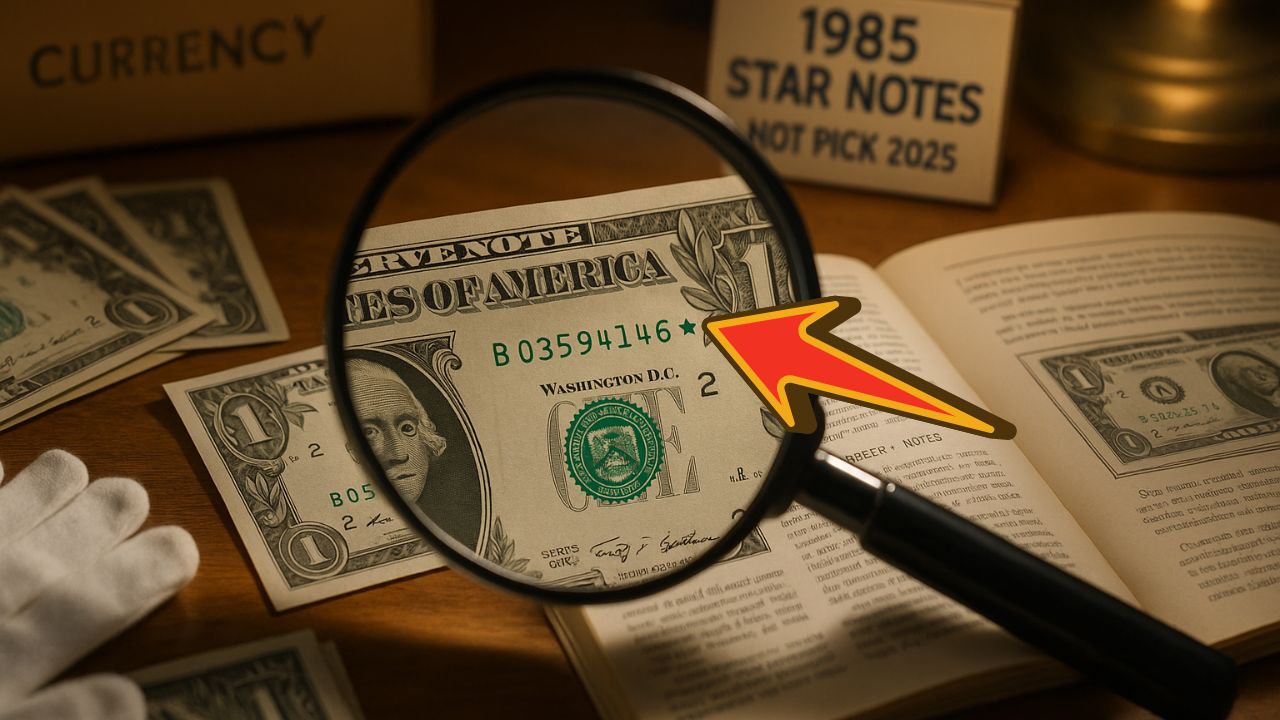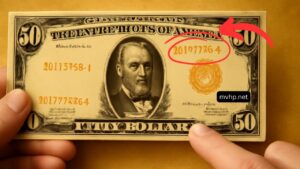In the world of numismatics, 1985 $1 Star Notes have emerged as a focal point for collectors in 2025. These unique bills, distinguished by an asterisk (*) next to the serial number, were issued to replace misprinted or defective notes during the 1985 series.
Over the years, their rarity and distinctive features have made them highly sought after. This article delves into the reasons behind their growing popularity, their value in the current market, and tips for collectors interested in acquiring these notes.
What Are 1985 $1 Star Notes?
Star Notes are replacement bills issued by the U.S. Treasury when errors occur during the printing process. The asterisk (*) signifies that the note is a replacement for a misprinted one.
The 1985 series, featuring the portrait of George Washington, was printed in various Federal Reserve districts, each identified by a letter code (e.g., A for Boston, B for New York).
The star notes from this series are particularly notable due to their limited print runs and the specific errors they were meant to replace.
Factors Contributing to Their Popularity
Several factors have contributed to the rising interest in 1985 $1 Star Notes:
1. Scarcity
The U.S. Treasury produces a limited number of star notes to replace defective bills. As a result, these notes are inherently rarer than their regular counterparts.
2. Historical Significance
The 1985 series was part of a major redesign of U.S. currency, introducing enhanced security features. Star notes from this period are seen as a piece of this historical transition.
3. Collector Demand
The combination of rarity and historical importance has made these notes highly desirable among collectors, leading to increased demand and, consequently, higher prices.
4. Condition and Grading
Notes in uncirculated condition or those graded highly by professional services command premium prices. The condition of a note significantly impacts its value in the collector’s market.
Value of 1985 $1 Star Notes in 2025
The value of a 1985 $1 Star Note can vary based on several factors:
- Condition: Uncirculated notes or those with high grades from professional grading services are more valuable.
- Serial Number: Unique or low serial numbers can increase a note’s desirability.
- Federal Reserve District: Certain districts may have produced fewer star notes, making them rarer and more valuable.
- Errors: Notes with printing errors or anomalies can be particularly sought after.
In 2025, well-preserved 1985 $1 Star Notes can fetch prices ranging from $15 to over $100, depending on these factors.
Collecting Tips for 1985 $1 Star Notes
For those interested in collecting these notes, consider the following tips:
- Research: Familiarize yourself with the different Federal Reserve districts and their corresponding letter codes.
- Condition: Aim to acquire notes in the best possible condition. Uncirculated notes are preferable.
- Authentication: Ensure that the notes are authentic and, if possible, graded by reputable services.
- Storage: Store your notes in protective sleeves or holders to maintain their condition.
- Networking: Join numismatic communities and attend coin shows to connect with other collectors and stay informed about market trends.
Table: Overview of 1985 $1 Star Notes
| Feature | Details |
|---|---|
| Series Year | 1985 |
| Denomination | $1 Federal Reserve Note |
| Distinguishing Mark | Asterisk (*) next to the serial number (Star Note) |
| Purpose | Replaced misprinted or defective notes |
| Federal Reserve Districts | A (Boston), B (New York), C (Philadelphia), D (Cleveland), E (Richmond), F (Atlanta), G (Chicago), H (St. Louis), I (Minneapolis), J (Kansas City), K (Dallas), L (San Francisco) |
| Significance | Represents a piece of U.S. currency history and printing processes |
The 1985 $1 Star Notes have become a prized possession for collectors in 2025 due to their rarity, historical significance, and unique characteristics.
Whether you’re a seasoned numismatist or a newcomer to the hobby, understanding the factors that contribute to the value of these notes can enhance your collecting experience.
By staying informed and following best practices for acquisition and preservation, you can appreciate the rich history encapsulated in these remarkable pieces of U.S. currency.
FAQs
What is the significance of the asterisk (*) on a 1985 $1 Star Note?
The asterisk indicates that the note is a replacement for a misprinted or defective bill, making it a star note.
How can I determine the value of my 1985 $1 Star Note?
The value depends on factors like condition, serial number, Federal Reserve district, and any unique features. Consulting a currency price guide or a professional grader can provide an estimate.
Where can I purchase 1985 $1 Star Notes?
These notes can be found through online marketplaces, coin shops, and numismatic auctions. Ensure that the seller is reputable and that the notes are authentic.




